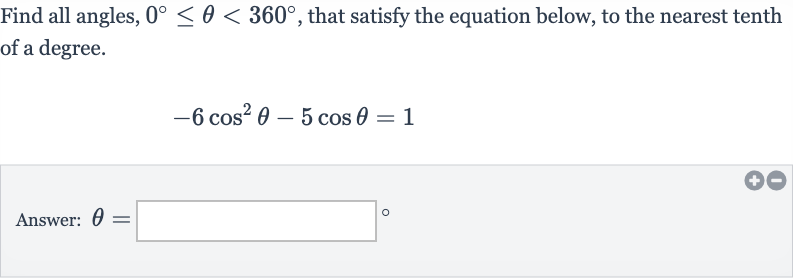Full solution
Q. Find all angles, , that satisfy the equation below, to the nearest tenth of a degree.Answer:
- Rewrite Equation: Let's first rewrite the equation in a more familiar quadratic form by substituting with a variable, let's say ''. So the equation becomes:Now, we need to solve for '' before we can find the corresponding angles for .
- Solve Quadratic Equation: To solve the quadratic equation, we first move all terms to one side to set the equation to zero:Now, we can use the quadratic formula to find the solutions for 'x'. The quadratic formula is , where , , and .
- Calculate Discriminant: Let's calculate the discriminant first:Discriminant = Since the discriminant is positive, we will have two real solutions for .
- Find Solutions for x: Now, we can find the two solutions for 'x' using the quadratic formula:This gives us two solutions for 'x':
- Find Angles for : Now we need to find the angles that correspond to the cosine values of and . Since we are looking for angles between and degrees, we will use the inverse cosine function and also consider the symmetry of the cosine function.For , we find the related angle:
- Calculate and : Using a calculator, we find: degreesHowever, since cosine is positive in the fourth quadrant as well, we also have another angle: degrees
- Find Angles for : For , we find the related angle:Using a calculator, we find: degrees (to the nearest tenth)Again, considering the symmetry of the cosine function, we find another angle: degrees (to the nearest tenth)

